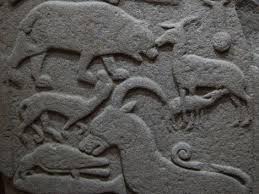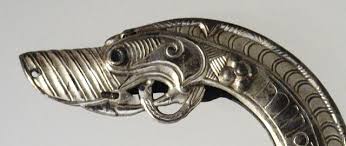Tags
Artisans, Brochs, builders, Caithness, dry stone, Farmers, Hunters, Picts, Prehistoric, Prehistory, Scotland, Warriors
Reader, I love the brochs, and though I find them fascinating and enigmatic, they were the homes of real people. As you can imagine a lot of reading has been happening around here. I’ve been learning about the daily life of the people who lived in these structures.
We know the brochs had one or more floors that were built in timber on the shelf like scarcements and accessed via the steps built between the double skinned walls.
Some were built on the coast and had other stone buildings constructed close around the base with palisades and ditches built to further protect the inhabitants.
Animals could have been brought into the ground floor for safety and or warmth in times of war or bad weather. The upper floors would have been for living and storage. These iron age castles were well able to withstand whatever the neighbouring clans or tribes might throw at them, not to mention the harsh winds and wild storms blowing in from the North Sea. Well it’s the North Sea in my stories.
With little wood to be found in the immediate area, the waft of peat smoke billowing through the cone shaped timber and thatched roof would have been commonplace. Smoke from peat fires isn’t something we come across here in Australia, so I felt incredibly blessed when a friend offered to light their peat fire for me when we visited Caithness. I even bought some Peatscense to burn and help me remember now I’m home again. Peat is a commodity that takes plenty of muscle to harvest (dig), but peat bogs are readily available in the flow country of Caithness and Sutherland in the far north of Scotland.
Which brings us to what the Picts would have eaten. They were farmers, graziers, fishermen and hunters, so I think they would have eaten very well indeed. There have been huge middens investigated, near Newburgh in Aberdeenshire, and it seems they Picts were quite partial to shell fish if the mounds of shells are anything to go on.
They were weavers and artists in stone and beautiful silver jewellery and much has been found to show their skills and abilities. Both the jewellery and carved stones give us the understanding, to a degree of the lives they lived.
Let’s not forget the Picts were fierce warriors who had the Romans running for the hills and made them build Hadrian’s Wall to keep them safely contained in the wilds of Scotland.
I have enjoyed learning about the indigenous people of Scotland, though no one is exactly positive that the Picts were the first peoples of Scotland. I have my own theories on this, and if you want to know what they are, you’ll have to read the books. When I’ve written them.
Thanks for popping in, I hope you’ve enjoyed sharing my research and travels as I’ve been preparing and writing my story set among these wonderful and mysterious people.






